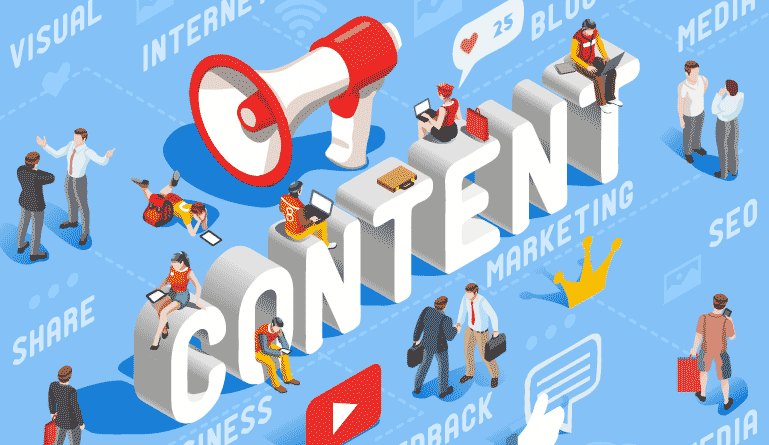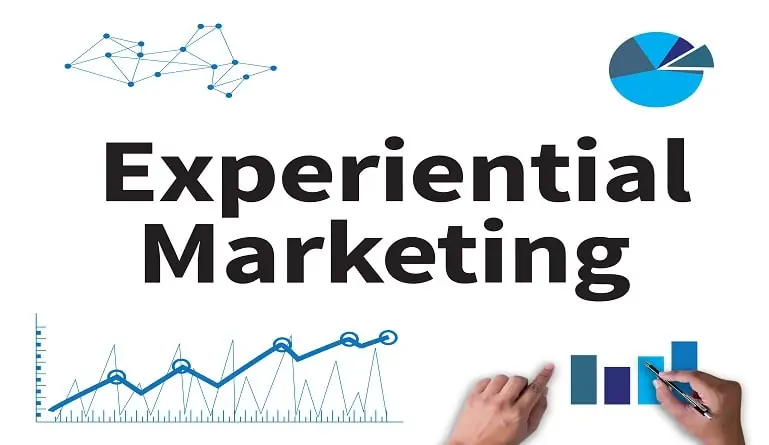In the world of content, data is the secret ingredient to a mouthwatering pie. Think of it as the missing puzzle piece in a 1000-piece jigsaw – hard to find but critical in completing the picture. By unlocking its power, you’re enhancing your puzzle-solving skills and revolutionizing the entire puzzle experience.
Daily, we generate massive amounts of data – imagine filling the Library of Congress 500 times over. Yet only a handful of businesses are skillfully slicing this pie, using it to tailor their content and craft personalized user narratives. Today, we’re uncovering the unseen value of data in content personalization. The era of one-size-fits-all content is passe. Welcome to the revolution.
Harnessing the Power of Data for Content Personalization
- Grasp the concept of data-driven content personalization
- Realize why data is essential in content personalization
- Discover actual instances of successful data-driven content personalization
Understanding Data-Driven Content Personalization
Data-driven content personalization embodies the art and science of delivering tailored content to your audience based on data collected about them. This goes beyond simply using the first name in an email – it leverages implicit and explicit data retained from user interactions to create content that’s a cut above the rest. With a robust data framework, a one-size-fits-all approach is abandoned, leading to content that resonates with your audience on a deeper, highly individualized level.
The Importance of Data in Content Personalization
Data forms the backbone of content personalization. It allows businesses to understand their audience, what they want, and how they interact with content. The importance of data can be condensed down to one word: relevance. The data businesses collect generic content and tailor it into relevant and appealing material to each consumer.
It’s crucial to consider tailoring your content to reflect an understanding of your audience’s interests, tastes, and behaviors. The result is increased user engagement and a sense of perceived value among your customers. Without the data, businesses guess what would resonate with their target audience.
Real-Life Examples of Successful Data-Driven Content Personalization
Let’s look at two examples of brands that mastered data-driven content personalization. One is streaming giant Netflix. Using data collected about viewers’ watching habits, they recommend shows likely to capture their interest, leading to longer subscription cycles and higher viewer satisfaction rates.
Another example would be Amazon. Amazon uses data from previous purchases, viewed items, and even search queries to offer personalized product recommendations, significantly increasing their sales.
Many more brands are flourishing with content personalization, proving the value of taking a data-driven approach.
To fully take advantage of data-driven content personalization, businesses must strategically implement relevant data into their content strategy. But how does one do that?
Step-by-Step Guide to Implementing a Data-Driven Content Personalization Strategy
- Get familiar with a robust, data-first approach to understanding your audience.
- Learn how to sift through data to unearth value, tailor your content, and measure your success.
- Gain working methods to refine and enhance your content personalization game.
Step 1: Understanding Your Audience
Understanding your audience is about more than vague assumptions or generic information. It’s about digging deep into who your audience is, what they value, and how they behave.
Database research, social listening, and customer interviews are excellent means to understand your audience.
However, understanding your audience contextually is essential. The same audience can have different needs and preferences across various platforms and situations. It’s crucial to consider the context when collecting and analyzing data about your audience.
Step 2: Collecting Relevant Data
This step involves quantifying your audience’s understanding by collecting relevant and diverse data.
You might collect demographic data, behavioral data like browsing patterns, and engagement data such as likes, comments, and shares.
Remember, the utility of collected data depends upon the quality and relevance. Hence, data collection should be intentional and strategic.
Step 3: Analyzing the Data
Data analysis converts raw data into actionable insights.
Powerful tools like Google Analytics and machine learning algorithms can help find patterns and trends in large datasets. Use quantitative analysis for numeric data, like demographics. For non-numerical data like customer feedback, qualitative analysis works best.
Remember, not all data has equal weight. Prioritize data based on your specific goals.
Step 4: Creating Personalized Content Based on Data
Data-informed content delivers what your audience craves.
The collected insights help modify the tone, style, timing, and type of content presented to your audience. A/B testing is an efficient method to determine what kind of personalization best resonates with your audience.
Step 5: Measuring the Success of Your Personalized Content
Finally, success measurement is about understanding how well your personalized content performs.
Key Performance Indicators like click-through rate, time spent on a page, and conversion rates can provide insights into content performance.
Remember, content personalization is not a one-time job. As your audience evolves, so should your tactics.
Maximizing Your Content Marketing with Personalization
- Realize why personalized content plays a pivotal role in content marketing.
- Discover how customized content can uplift your marketing ventures.
- Learn the art of integrating personalization into your content marketing strategy.
The Role of Personalized Content in Content Marketing
The age of one-size-fits-all content marketing strategies is slowly fading into oblivion. The “spray-and-pray” approach often ends in a black hole of anonymity. Businesses that are taking over their industries understand the importance of personalized content. The approach involves tailoring content to meet prospects’ and customers’ unique needs, behaviors, and interests. This targeted approach helps increase customer engagement and conversion rates.
A study by Experian pointed out that personalized email campaigns receive 29% higher open rates and 41% higher click-through rates than generic emails. Also, 88% of U.S. marketers found measurable improvements in their business from personalization, with over half reporting a lift greater than 10%.
How Personalized Content Can Boost Your Content Marketing Efforts
Seeing your name in a personalized marketing message can bring an unexpected rush. Businesses that leverage personalized content are seeing increased customer retention, quality leads, and significantly improved return on investment (ROI).
When your content resonates with your audience’s unique needs and interests, it naturally enhances their engagement with your business. They have a sense of belongingness, while you gain a loyal customer for life.
Tips for Integrating Personalization into Your Content Marketing Strategy
Integrating personalization in your content marketing may sound complex, but it’s achievable with the right strategy. Here are a few steps to get started:
– Understand your audience: Create detailed buyer personas to gain insights into your target audience. These should include demographics, personality traits, preferences, and pain points.
– Deliver personalized content: Use a content management system (CMS) to deliver customized content based on your audience’s behavior, preferences, and past interactions.
– Measure effectiveness: Measure the effectiveness of your personalized content by tracking metrics like click-through rates, conversion rates, engagement rates, and others.
Remember, keep sight of your brand’s core message in the ultimate drive to personalize. Create content that reflects the voice of your brand and resonates with your audience at the same time.
Content Personalization Without Data: Is It Possible?
- Uncovering the complexities of personalizing content without data
- Considering alternate methods of content personalization
- Real-world examples of successful content non-data-based personalization
The Challenges of Content Personalization Without Data
Delivering personalized content without leveraging data can feel like navigating a maze blindfolded. Though not entirely impossible, it presents specific inherent challenges.
First, the accuracy and relevance of content need to be improved. Since content personalization largely depends on understanding user preferences, interests, and behaviors, doing so without data might result in generic, somewhat irrelevant content. This defeats the primary goal of personalization.
Second, versatility becomes an obstacle. Content personalization without data often requires manual intervention, making the process inefficient and less agile in the face of changing consumer trends or business goals.
Indeed, a knack for good storytelling may alleviate some of these difficulties, but more data is needed to enhance the depth of this personal connection.
Alternative Methods for Content Personalization Without Data
Despite the challenges, companies can employ a few techniques to personalize content without data.
User-generated content (UGC) is a powerful tool that enables businesses to craft relatable narratives. By incorporating reviews, feedback, or testimonials, companies can ensure a level of personalization that resonates with their audience.
Content syndication, where a third-party website republishes digital content, is another method worth considering. Syndication helps draw in more readers by exposing your content to larger, more diverse audiences.
Another viable alternative is contextual personalization. This method focuses on the content consumption situation, such as the reader’s geographical location or the type of device used to access the content.
Case Studies of Successful Content Personalization Without Data
Leading brands have used non-data-driven personalization to connect with their audience effectively.
Take the example of the Dollar Shave Club, a grooming brand. Instead of relying heavily on consumer data, they created an engaging narrative around “shaving” using humorous storytelling. This approach helped them strike a chord with audiences and grow into a billion-dollar company.
San Francisco-based clothing brand Betabrand employed similar tactics. Their strategy involved contacting their customers for design ideas, effectively making the client the co-designer. This method created a sense of inclusion and unique personalization that spoke volumes to their target demographic.
Unearthing the Treasure in Data Personalization
- Unleashing the hidden potential of data personalization
- Maximizing benefits of data personalization
- Foretelling the future trends of data personalization
The Untapped Potential of Data Personalization
Personalization has become a fundamental expectation for consumers, and data is the cornerstone of this concept. With abundant data at your fingertips, the real challenge lies in processing and analyzing this data effectively.
Advancements in technology have led to methods that now allow for the extraction of valuable similarities and patterns. This will enable organizations to build particular profiles, ensuring accurate and effective targeting. Personalization goes beyond mere automation; it involves studying behavioral patterns, capturing latent needs, and delivering value. This creates a customer experience that is both unique and engaging.
Harnessing data personalization involves converting raw data into valuable insights. By integrating these insights with the business strategy, organizations can deliver tailored experiences that efficiently engage customers and enhance conversion rates.
How to Leverage Data Personalization for Maximum Benefit
To leverage data personalization, gathering data from diverse sources is crucial. This could entail demographic, transactional, or behavioral data. Creating a unified customer database enables a more comprehensive perspective.
Personalized campaigns need not be overwhelmingly robust to be effective. The success of personalization lies in the balance between subtlety and impact, avoiding intrusion while ensuring engagement. Measuring the effectiveness of personalized strategies through consistent testing is also vital for reflected successes.
Data security is imperative. With GDPR and other data privacy regulations, respecting customer’s data privacy and ensuring their trust is vital when handling personal data.
Future Trends in Data Personalization
Artificial intelligence and machine learning are paving the way for advanced possibilities in data personalization. Predictive analytics strives for continuous improvement, refining strategies based on customer reactions and driving higher engagement rates.
Advancements in technology are making data personalization progressively accessible to small businesses. With the democratization of AI, smaller companies can now harness the power of data personalization, which would have previously been too complex or expensive.
Running parallel to these advancements, ethical considerations around data personalization are coming to the forefront. As organizations become increasingly invested in data personalization, users will also demand greater transparency and control over their data.
Supplementary Information
- Understanding the essence of content personalization and its relevance.
- Discovering how data hugely influences content personalization and the resulting benefits.
- Discussing challenges and a peek into the future of content personalization.
What is Content Personalization?
Content personalization is more than a buzz term; it’s a strategic move to deliver relevant and targeted experiences to users. It’s about morphing static content into dynamic pieces that adapt based on variables like the user’s past behavior, interests, or demographic information. Fueled by technology and big data, personalized content marketing is more robust than ever.
The Role of Data in Content Personalization
The magic ingredient for successful content personalization is, without a doubt, data. Every click, every view, and every share stitches together a narrative about your users’ preferences and behavior. Capturing and translating this data into an actionable strategy can elevate your content from ‘readable’ to ‘personal.’
Data-driven personalization enables a unique user journey, ensuring that your audiences find value in your content, leading to lasting relationships and increased ROI.
The Benefits of Content Personalization
Personalization influences various aspects of content marketing, from user engagement to improved conversions. Among other benefits, it stirs undivided attention, enhances user experiences, and cultivates loyalty. Notably, it’s a powerful tool in combating the infobesity of today’s digital landscape.
The Challenges of Content Personalization
Despite the noteworthy advantages, content personalization is not devoid of challenges—from managing data volumes and ensuring data privacy to alienating users with too much personalization. Choosing the right technology to handle data is another hurdle.
The Future of Content Personalization
Content personalization is progressing towards becoming even more intelligent and contextually relevant. As machine learning and artificial intelligence advance, precision in targeting users will continue to increase. Future strategies may incorporate real-time personalization, hyper-personalization, and data science to predict user behavior.
Conclusion: Transforming Data into Personalized Content: The Game-Changer You Were Looking For
Data influence must be considered in the dynamic world of content creation. Leveraging data for personalized content guarantees you an edge in customer loyalty, conversions, and overall business growth.
Your information is robust. But the real magic starts when you use that data to present your users with targeted and relevant content tailored just for them.
So, it’s high time you stop missing out. Dive into your analytics tools and analyze your audience’s behaviors, demographics, and preferences. Then, combine this insight with your creativity to generate customized content.
Think about the actions you can take today to start integrating data-driven personalization into your content strategy.
Remember, a step toward personalization is a leap toward business success.





